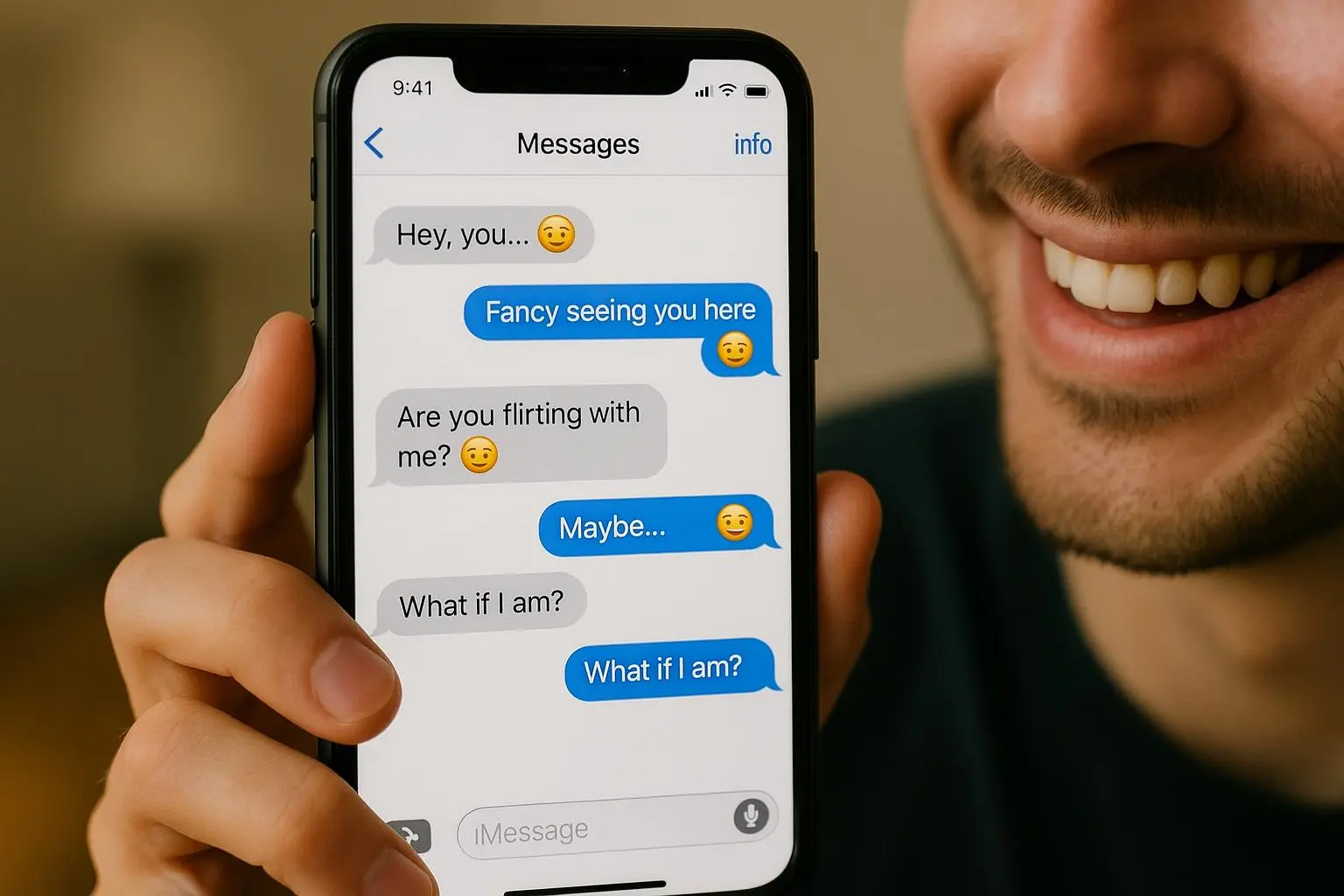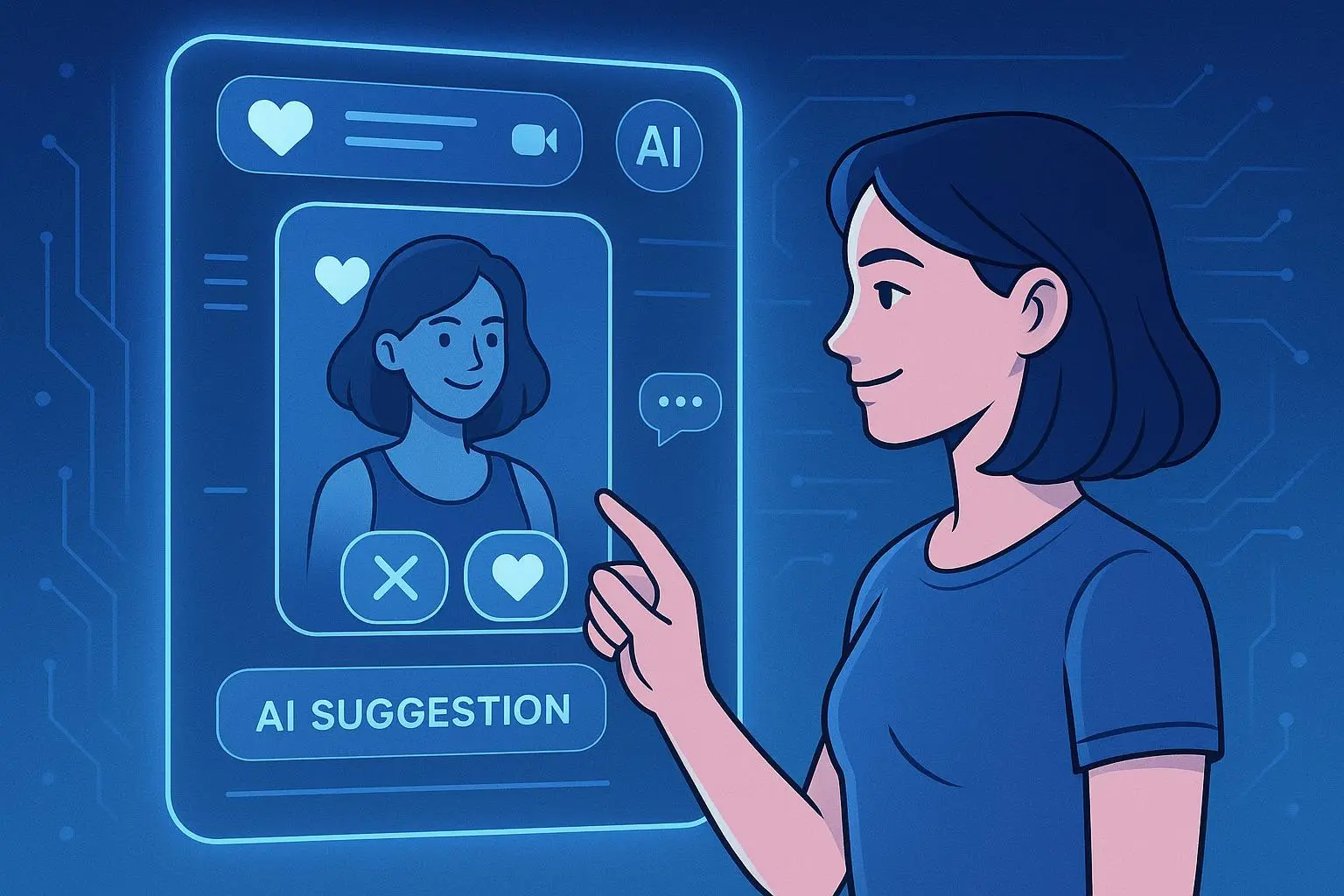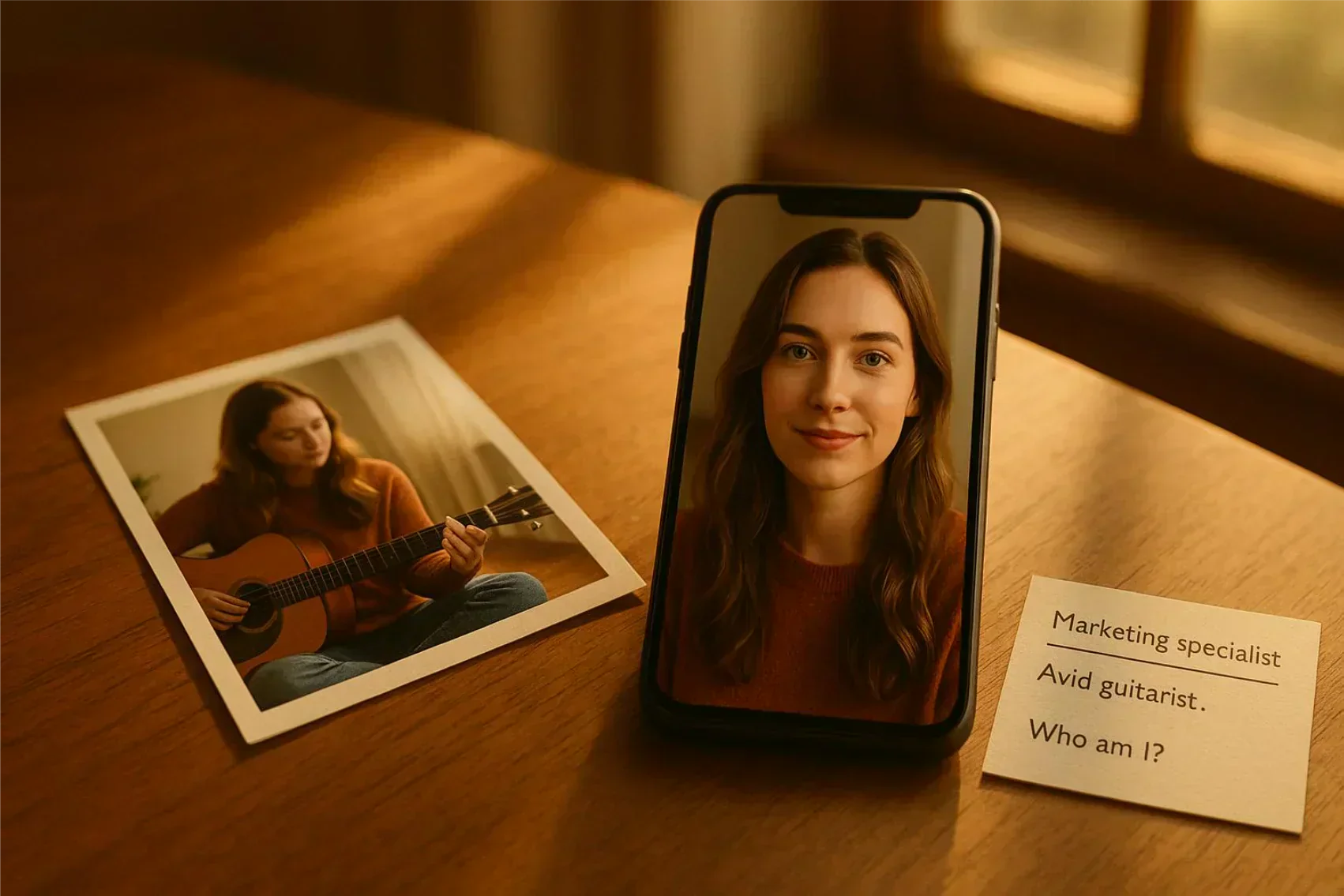
How to Flirt Over Text: 7 Proven Approaches That Work
Published on 5/9/2025 • 12 min read
I remember the first time I realized texting could feel as thrilling as an in-person flirt. It was a slow Tuesday evening in June 2023, and a message lit up my phone that wasn’t a one-word “hey” — it was clever, warm, and somehow charged with possibility. That conversation didn’t lead to fireworks overnight, but it changed how I thought about digital chemistry: being attentive, playful, and specific mattered more than perfectly crafted lines. After experimenting with different approaches on Hinge, I noticed a real improvement in how often conversations turned into actual dates, and how quickly those connections moved offline.
Flirting over text isn’t about reciting clichés or pretending to be someone you’re not. It’s about using the unique intimacy of written words — the pauses, the timing, the tiny surprises — to create connection. Below I’ll walk you through seven proven approaches, real example messages that actually worked for me, and how to adapt each style to your voice. I’ll share what worked, what flopped, and how to recover gracefully when a joke lands differently than intended.
Why text flirting feels different — and why that’s a superpower
Texting strips away body language, but it also gives you tools a face-to-face interaction doesn’t: thoughtfulness, timing, and the ability to craft tone. You can send something playful, then let it sit and allow anticipation to build. You can reference earlier details and show you were listening. And you can be witty in a way that’s low-pressure.
That said, tone is easy to misread. Text flirting succeeds when it balances three things: clarity (are you making your interest known?), playfulness (are you fun to be around?), and respect (are you reading consent and comfort?). Keep those in mind and you’ll avoid being confusing or pushy.
A simple framework I use
When I decide to send a flirty message, I quickly run it through three mental checks: is it specific, is it light, and is it timed right?
- Specific: Mention a unique detail — a line from a date, a mutual joke, or a shared plan. It signals attention.
- Light: Keep it playful rather than heavy. Flirtation should invite a smile, not a lecture.
- Timed right: A midday ping can be a sweet interruption; a late-night text might feel more intimate. Match timing to your intent and your rapport.
This framework helped me avoid generic lines that felt empty. When something didn’t land during the tests, it was usually because one of these boxes wasn’t checked — the message was too vague, too intense, or poorly timed.
The seven styles that spark attraction (with real examples)
Below are seven approaches I use regularly. Each has an example text, why it works, when to use it, and a note on making it authentic.
- The Witty Opener — stand out from bland openers
Example: “My dog wanted me to tell you he misses you. I don't even have a dog, but the point stands.”
Why it works: It breaks the pattern of “hey” by being unexpected and humorous. It lowers pressure and gives an easy way to respond — laugh, tease back, or play along.
When to use it: Opening a conversation with someone you’ve matched with, met once, or haven’t texted in a few days.
How I make it mine: I swap in tiny details that fit my voice — maybe a fictional cat or a coworker who’s jealous. The line should sound natural, not scripted.
- The Callback Compliment — show you were paying attention
Example: “Still thinking about that story you told me about Costa Rica. Your passion for adventure is seriously attractive.”
Why it works: It’s specific and sincere. People respond to being seen; this kind of compliment feels earned because it references something they care about.
When to use it: After a date or deep conversation where they shared a story or passion.
Concrete result: After sending a callback compliment to someone I met at a coffee meet-up in November 2023, they replied with a 300-word message and we scheduled a second date that week — a direct conversion from attention to action.
- The Playful Challenge — create flirtatious tension
Example: “I have a feeling you're the type to steal the covers. Are my instincts right?”
Why it works: It’s light, teasing, and invites imagination. Playful challenges create a mini-game people enjoy.
When to use it: When the conversation is already warm and you want to escalate the flirtation a notch.
What to avoid: Don’t use this on very new rapport or with someone who hasn’t shown playful vibes. A teasing line can feel aggressive if it’s one-sided.
- The ‘Thinking of You’ Text — small, meaningful gestures
Example: “Just saw a meme that I think you'd appreciate — posted it on my story. Hope your day's going well.”
Why it works: It’s casual and low-pressure. It tells someone they crossed your mind without demanding a long exchange.
When to use it: Midday lulls or when you want to reconnect without reopening a heavy conversation.
Personal note: I send these after I see something that genuinely reminds me of a joke we shared. Authenticity makes the recipient feel noticed rather than pursued.
- The Future Projection — make plans feel inevitable
Example: “Heads up — I just heard about a new taco spot and I’m officially saving you a seat next to me.”
Why it works: It frames the next meetup as a foregone conclusion, which can be intoxicating. It’s confident but not presumptuous.
When to use it: When you want to suggest a date but keep the tone playful and light.
How to personalize it: Mention something you know they like — a cuisine, a band, a park — so the projection feels tailored.
- The Suggestive Question — nudge the vibe (use with care)
Example: “So, besides getting into trouble, what are you planning this weekend?”
Why it works: It hints at mischief and chemistry without being explicit. If the person likes risqué banter, this opens the door for more flirtatious back-and-forth.
When to use it: When there’s clear mutual interest and playful energy.
Safety tip: Always watch responses. If they don’t match the tone or seem uncomfortable, switch gears quickly.
- The Sweet Goodnight — leave them with a positive glow
Example: “Alright, I'm heading to bed. Just wanted to say chatting with you was the best part of my day. Sleep well.”
Why it works: It’s sincere and leaves a warm impression. Ending on a positive note encourages future conversations and reinforces emotional safety.
When to use it: After a long chat or a meaningful exchange — this message closes the night gently.
My experience: Variations of this often brought a reciprocal goodnight and sometimes a plan suggestion for the weekend.
When flirting over text can go wrong — and how to recover
Not every message lands. Here are missteps I made (and how I fixed them):
- Over-texting too early: I once sent three playful texts in a row to fill silence. It felt needy. Fix: I paused for a day; the person came back later saying they were swamped. Conversation resumed.
- Jokes that miss cultural or personal context: I tried a sarcastic line that came off as harsh. Fix: I acknowledged it, apologized briefly, and shifted to something sincere.
- Escalating too fast: I sent a suggestive text before I was sure of the vibe. Fix: I backed off, kept subsequent messages light, and refocused on shared interests until the rapport returned.
A recovery line I use when a joke lands wrong: “Wow, that one didn’t age well — my bad. Tell me something that made you smile today?” It admits fault, stays playful, and redirects to a safe topic.
Texting etiquette that actually matters
A few practical habits make flirtation feel effortless:
- Match energy, not exact word count. If they send short replies, don’t overwhelm them with paragraphs.
- Respect response time. If someone takes a while to reply, don’t assume disinterest — life happens.
- Use emojis sparingly to clarify tone — a wink or smile can transform a line from ambiguous to playful.
- Avoid heavy subjects in early flirtation. Text is great for light intimacy, not conflict resolution.
I learned to wait at least a day before bringing up something serious via text. If it’s important, a call or in-person chat is usually better.
How to develop your own flirty voice
Authenticity wins. You don’t need to mimic someone’s witty persona — be playfully you. How I developed a flirty voice that felt natural:
- Notice what made others laugh and borrow the structure, not the words.
- Keep a short list of go-to playful prompts. Mine includes a teasing question, a callback compliment, and a future projection. I rotate them so I don’t sound repetitive.
- Practice being specific. The more details you include, the more sincere messages feel.
Over time, certain phrases become your signature — a particular emoji or pet phrase — and that creates familiarity.
Examples in context — two real conversation sequences
Example 1 — Hinge match, Day 3 (timeline & platform included)
- Day 3, 9:12 PM — You: “My neighbor just adopted a rescue and I’m forced to take selfies with it. Clearly my social life peaked.”
- Day 3, 9:15 PM — Them: “I demand a selfie.”
- Day 4, 11:03 AM — You: “Only if you promise to approve my modeling career.”
- Day 4, 11:10 AM — Them: “Modeling career approved. When are we doing the photoshoot?”
- Day 6 — You: “Taco place Friday? I’ll bring the dog — I mean, the enthusiasm.”
Outcome: Match converted to an in-person date six days after the witty opener. The flow combined humor, a playful challenge, and a future projection.
Example 2 — After a first coffee date, WhatsApp follow-up
- Date night recap, Day 1, 10:02 PM — You: “Still thinking about your story from the film set. Your enthusiasm for it was contagious.”
- Day 2, 9:48 AM — Them: “Aww, thank you. That means a lot.”
- Day 3, 7:30 PM — You: “Heads up — I found a tiny outdoor cinema this weekend. Save me a seat?”
Outcome: Their positive reply led to a second date three days later. This used a callback compliment plus a future projection tailored to their interest.
When to take it offline
Texting builds interest, but it’s not the endgame. If things click, suggest a low-pressure IRL plan after a laugh-filled exchange or when both express curiosity about shared interests.
A smooth transition line I use: “This is getting dangerously fun for text. Want to continue over coffee this weekend?” It’s playful and direct.
Quick templates to adapt (use sparingly and personalize)
- Witty opener: “I tried to come up with a clever opener but my brain outsourced it to a cartoon villain. How’s your day?”
- Callback compliment: “I can’t stop thinking about [specific detail]. You’ve got me intrigued.”
- Playful challenge: “Bet you can’t guess my go-to guilty pleasure. Loser owes coffee.”
- Thinking of you: “Saw [thing] and immediately thought of you. Hope your day’s going well.”
- Future projection: “Heads up: I’m planning to try [place/event]. I’m saving the best seat for you.”
- Suggestive nudge: “So what mischief are we plotting this weekend?”
- Sweet close: “Chatting with you made my day. Sleep well :)”
Tip: Tweak each template to include a concrete detail so it feels specific to the person you’re texting.
The ethical side of flirting over text
Flirting should be fun for both people. Pay attention to consent, comfort, and signals. If responses become short, delayed, or less enthusiastic, pause and reset. Respecting boundaries builds trust rather than killing attraction. Avoid manipulative tactics like intentional jealousy or playing controlling games. Those create drama, not connection.
Product mention and disclosure
I sometimes use prompt-based helpers to break a creative block. I’ve tested Rizzman's Rizz Responder as a neutral tool to suggest playful replies during writer’s block. I have no affiliate relationship with that product; it’s simply one resource I’ve tried. I’m intentionally not linking directly to a download here — treat it like a toolbox item, not the answer.
Final thoughts — confidence is quieter than you think
The best flirty texts aren’t loud declarations. They’re small, confident nudges that say: I notice you, I enjoy you, and I’d like to see more of this. They’re playful, specific, and attuned to the other person’s vibe.
If you remember one thing: be curious. Flirtation is a two-way street. Ask questions, reference details, and let the other person surprise you. Some of my favorite conversations started with a dumb joke and unfolded into something real because both people leaned in.
Small, thoughtful messages beat perfect lines. The goal isn’t to impress — it’s to connect.
Sleep on it if you need to, but don’t overthink every word. A good text is part honesty, part play, and all you.
References
Ready to Optimize Your Dating Profile?
Get the complete step-by-step guide with proven strategies, photo selection tips, and real examples that work.


